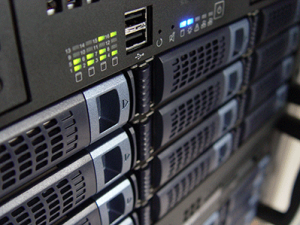Viral, just uttering the word makes online marketers start to salivate and also panic. You never know what will reach critical mass and go viral. Some pieces of content that have lain dormant, getting a few hits here and there, suddenly explode, generating thousands or even millions of hits almost overnight. Having a piece of content go viral can be great for business, but it can also be a disaster if you server isn’t able to handle the load.
 Picture this:
Picture this:
Your website is hosted by a discount company such as GoDaddy. This is fine when 1000 people a day are visiting. Then, without any warning, someone links to an especially cute cat photo on your site from Reddit. Suddenly 10,000 people are trying to access your site at once. The virtual server, which has a limited amount of processing resources available, struggles mightily under the onslaught of traffic. The site load times slow to a crawl, if people can get through at all. Not a great first impression for thousands of potential customers.
When the Google Bot comes crawling:
Fathers day weekend one of our clients posted a blog. The image was picked up by Google Image search and the page ranked very high for a variety of web searches related to fathers day. As the traffic graph shows, there was a massive spike in traffic, with 2 months worth coming in over 2 days!
Over the course of about 10 hours, Google showed the image to 600,000 searchers, and the page to approximately 1.4 million. That’s 2 million searchers, with the bulk of the traffic concentrated in the middle 6 hours.
Here’s what it looks like to your server:

The green bars on the graph represent the last MONTH’s worth of traffic. While the purple bars depict the 6 hour spike. The hit count exceeded 1 million, so I had to reduce it to fit it on the graph.
You can see that we had about 2x the number of average monthly visitors during the spike, and double the monthly pages viewed as well. The real fun was behind the scenes. Google hit (requested data from) our server over 1 million times, slurping up what would have been a year’s worth of bandwidth in a couple of hours!
So, how did our server handle it? No issues at all. We’re ready for your viral blog post.




 The next best option is to pay a hosting company, such as Godaddy, to host the site for you. They operate the server, usually in a large data center, where there are very fast connections available. This leads to an acceptable level of performance, but these discount hosting companies have to pack many sites onto each server to turn a profit. All those sites competing for processing power leads to sluggish response times.
The next best option is to pay a hosting company, such as Godaddy, to host the site for you. They operate the server, usually in a large data center, where there are very fast connections available. This leads to an acceptable level of performance, but these discount hosting companies have to pack many sites onto each server to turn a profit. All those sites competing for processing power leads to sluggish response times. Currently, we host our staging and production West Coast websites from a California data center. We back both up daily to two separate servers, in addition to copies on our local development machines. That way, if Mt Hood erupts, and Portland turns into Pompeii II, you’re site would happily keep on running. Or if the “Big One” hits, and California slides off into the Pacific, we’d still be able to fire up a new server and restore your site in less than an hour. But let’s hope neither happens.
Currently, we host our staging and production West Coast websites from a California data center. We back both up daily to two separate servers, in addition to copies on our local development machines. That way, if Mt Hood erupts, and Portland turns into Pompeii II, you’re site would happily keep on running. Or if the “Big One” hits, and California slides off into the Pacific, we’d still be able to fire up a new server and restore your site in less than an hour. But let’s hope neither happens.